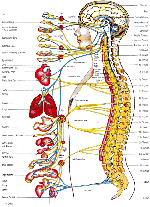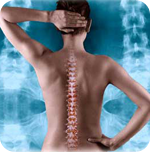


S.A.S.T.M. Instruments/Tools
S.A.S.T.M. stands for: Sound Assisted Soft Tissue Mobilization and was developed by David Graston a pioneer in (I.A.S.T.M.) Instrument assisted soft tissue mobilization. He developed these tools after scar tissue from knee surgery left him with chronic pain. His first instruments called the Graston Instruments were metal, and although they work well, in my opinion, were not ergonomically friendly for use by the practitioner using them.
His second incarnation of tools (S.A.S.T.M.) are easier to use and because of the polymer used in its construction allows the practitioner and patient to "feel" and "hear" the areas where there are fibrotic tissues being released. More about this technique can be learned by visiting his website, www.sastm.com.
Today there are many Chiropractors, Physical Therapists, and Athletic Trainers using both sets of tools to successfully treat many acute and chronic musculoskeletal injuries such as strains and sprains, tendonitis, carpal tunnel, nerve entrapment syndromes, rotator cuff injuries, acute and chronic neck and lower back disc problems, and various other conditions. It should not come as a surprise that many of the training rooms of college and professional sports teams have these tools on hand to treat their athletes.
Traditional Chinese Medicine (T.C.M.) has long used a system called Gua Sha that is based on these same ideas. Traditionally a piece of jade or a ceramic spoon was used to "scrape away disease" of an area to relieve pain. The translation of Gua is to scrape or scratch and Sha represents the disease through "transient therapeutic petechiae" which appear as tiny red dots. After a treatment, the extravasated blood appears as red macula and fades to ecchymosis thereby improving blood circulation to the area. In an article Gua Sha: Another form of Mechanical Load, by Warren Hammer MS, DC, DABCO, he writes that Arya Nielsen, PhD, an adjunct faculty member in the department of integrative Medicine at New York Beth Israel Medical Center, who is a strong proponent of Gua Sha, wrote an interesting article in the January 2009 issue of the Journal of Bodywork and Movement Therapies (JBMT). She states that often the literature incorrectly describes the results of gua sha as causing battery trauma, bruising, burns, dermatitis, pseudo bleeding, and even hematoma. More research is needed but preliminary research has shown improved microcirculation of the surface tissue measured by Doppler imaging. There is also documented reduction in myalgia (muscle pain) in the area being treated and in areas distal to the treatment area where there was no change in the microcirculation. It is believed that this effect is due to the improved change in the tensegrity of the fascial continuum. This is not unlike how standing on a wobble board can help lower back, neck and shoulder problems by improving proprioceptors in the feet. By improving how living cells and tissues sense and respond to mechanical stress, mechanoreceptors in muscles and tendons that trigger pain, get turned off. The fascia in a sense acts like a web or matrix around all the muscles and organs in the body. When releasing the tension in one area, the matrix is under less stress in an area far removed from the treatment area.
To view more information on S.A.S.T.M., click here.














